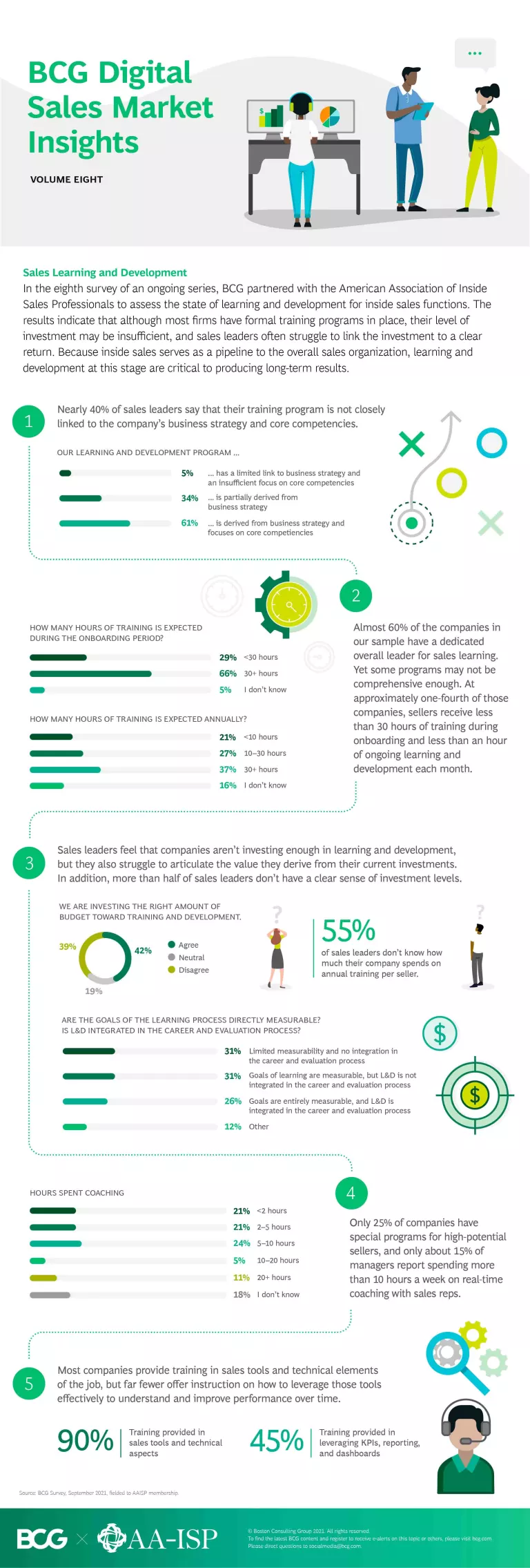At many companies, the inside sales function—which, unlike field sales teams, does not travel to customer sites—has historically been limited in what it can do. In the past, inside sales teams typically handled low-value customers and transactions and supported field reps. But the recent shift to remote and virtual sales in response to the pandemic showed companies how much they could accomplish without being onsite with clients. As a result, inside sales has become a critical priority for the foreseeable future. What’s more, companies are learning that inside sales can be a far more efficient way of selling—with no travel costs and the ability to move quickly to capture opportunities identified through data-driven analytics.
To explore the opportunity that digitally empowered inside sales teams represent, BCG has partnered with the American Association of Inside Sales Professionals ( AA-ISP ) on a series of surveys through 2021. Each month, we will survey sales executives from Fortune 500 companies on a range of topics and publish our results. The goal is to better understand the trends and industry shifts that are altering the sales function—and specifically how companies can reposition inside sales teams to capitalize on these shifts.
Download the infographic
Download the infographic
Download the infographic
Download the infographic
Download the infographic
Download the infographic
Download the infographic











